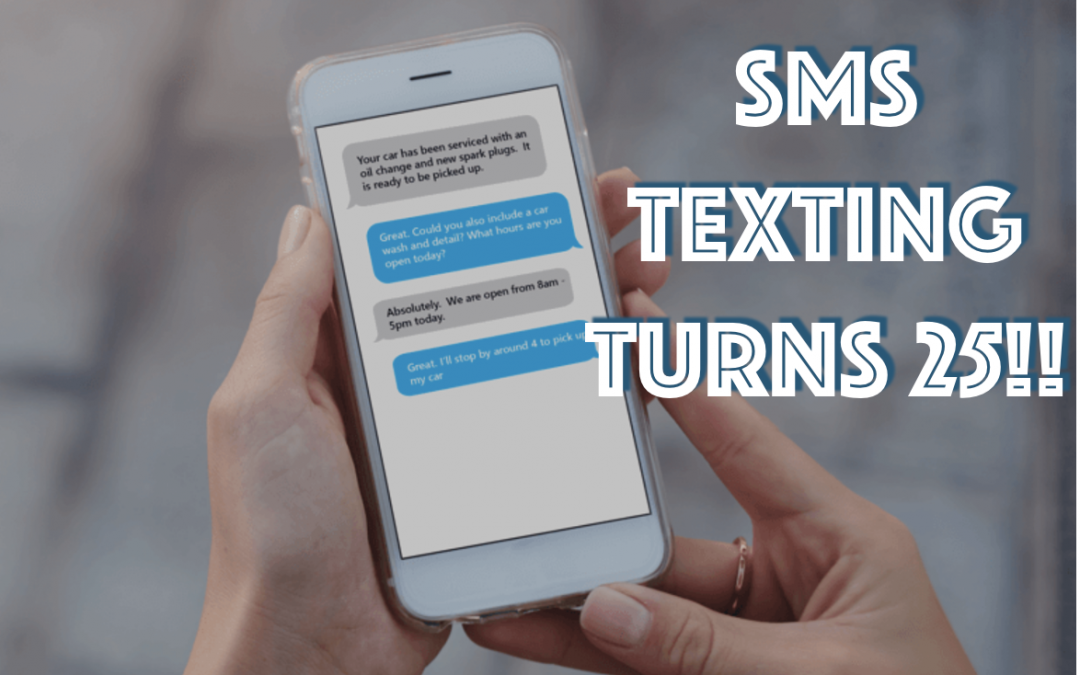On December 3, 1992, British software engineer Neil Papworth sent the world’s first ever text message. It was to an executive at Vodafone, saying “Merry Christmas”.
SMS now stands as the most successful communications platform of all time, connecting billions of people worldwide. Celebrating 25 years, lets review SMS’s history and the developments that have shaped its phenomenal success.
SMS origins back to 1984, when Friedhelm Hillebrand and Bernard Ghillebaert from the GSM Corporation first developed the concept of sending a short message (hence SMS – the short message service) to and from a mobile device.
1992: Merry Christmas
On December 3, 1992, British software engineer Neil Papworth sent the world’s first ever text message. It was to an executive at Vodafone, saying “Merry Christmas”.
1993: Nokia Makes the SMS Commercial
Nokia released the 1011 – the first handset that enabled users to send and receive text messages – and the world was changed forever.
1995: Slow to adapt
Consumers initially failed to see the advantages of texting – the average mobile phone user in the US sent less than one text a month:-(
But 1995 brought the invention of the T9 system for writing text messages on a numerical keypad, using keypad numbers 1-9 to type individual letters – a major solution for many mobile phone companies.
1997: QWERTY Keyboards pave the way
in 1997 Nokia released its full physical “qwerty” keyboard on a mobile phone – the 9000i Communicator. It paved the way for the BlackBerry (launched in 2002), and the rise of the way we text on smartphones today.
Mobile operators were soon hailing texting as a quicker alternative to voice calls.
1999: SMS ignites
In1999, mobile operators turned a simple messaging platform into a global billion-dollar industry. Texting became so popular that it sparked its own language. Txtspk made it quicker to text and as a result, the average number of text messages sent in the US reached 35 per person every month. At $0.10 a text, it was a gold rush for mobile operators.
2007: SMS becomes the most successful communication platform of all time
2007 was a landmark year for SMS – it was also the first year where more texts were sent than calls made from mobile phones.
Despite rapid developments in smartphone technology, and new apps flooding the market, texting remained the number one form of mobile communication.
2011: Everyone still uses Texting from the Smartphone
By 2011, Smartphones had taken people to virtual keyboards on a smartphone screen and the introduction of Swype sped up the process of texting once again. As texting became quicker and easier, more people started using it as their go-to method of communication with not only friends and family, but with preferred businesses as well. It was in 2011 that SMS usage peaked – with 3.5 billion active users across the world.
Today: 5 billion people and counting
With the rise of instant messaging services such as WhatsApp, iMessage, and Facebook Messenger, many experts are predicting a decline SMS texting. But shallow thinking like that ignores the 5 billion people globally using SMS every day. What’s next, why new services like RCS, which uses SMS functionality to send information-rich, interactive messages with app-like capabilities.
And the future? Well, SMS is still proving its worth to brands looking to improve their customer experience. It remains an ideal platform for sending customers useful, relevant information in the right place and at the right time.
While new forms of communication come and go, SMS is 25 and remains the most successful communications platform of all time.
If you’d like to learn more about how SMS texting can help you make timely connections with billions of customers, ask the textperts. Call or text 866-367-6889!

